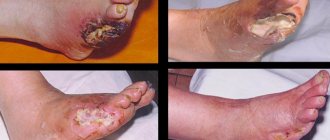Fear of the unknown
Proper preparation for childbirth helps a woman to tune in psychologically and learn to behave competently during childbirth, and of course, if you are informed, the fear of the unknown, which always frightens people, goes away.
Currently, there are many courses for pregnant women. It is advisable to choose courses where there are classes with a psychologist, an obstetrician-gynecologist, and a pediatrician. Only then will you know about all aspects of childbirth. Unfortunately, it happens that in courses conducted only by psychologists, a woman is instilled with a negative attitude towards medical manipulations and cannot explain their meaning, and in courses attended only by people with medical education, they do not help to properly tune in psychologically, which is especially important. for emotional women. Childbirth preparation courses are useful not only because you receive reliable and understandable information and get rid of the fear of the unknown, but also because there you communicate with other expectant mothers and discuss similar problems.
The courses should include not only lectures, but also practical exercises where relaxation and proper breathing skills are practiced.
In addition to courses, you need to read books or magazines about childbirth. But these should be popular publications about natural childbirth. You should not study a textbook on obstetrics and gynecology, because such books are written for doctors and the emphasis is on those situations where medical care is necessary, that is, on the complicated course of childbirth.
Imagine in advance how your birth will go, make your plan. In psychology, there is a special technique called “modeling.” This technique involves creating a scenario for a favorable development of the situation and consolidating this experience in memory.
For many expectant mothers, the maternity hospital is their first experience in a hospital, or, simply put, in a hospital. In order not to be intimidated by hospital corridors and wards, it is advisable to get acquainted with the structure of the maternity hospital in advance - it is better to go there on a tour (it can be provided in a cycle of classes for pregnant women or be included in the contract for childbirth) or at least read about the structure of the maternity hospital in special literature for expectant mothers .
For those who are very, very, very afraid of giving birth...
I was simply catastrophically afraid of giving birth, I had thoughts about both a caesarean section and an epidural, I really wanted to ease myself into what I imagined was a terrible and painful process of childbirth. For the last 2 months before giving birth, I generally walked around in constant fear and was glued to the laptop monitor, reading the stories of those who had already given birth on this site. The pictures seemed terrible...
The PDR was on November 7... My husband and relatives made bets))) Dad said that I would give birth on either the 3rd or 4th, my husband said that it would be on the 6th or 13th (he had read that most children are born on Tuesday, we ourselves were born on Tuesdays))), mother - that on the 8th... But nothing happened on any of these dates... There was not even a hint of contractions, the baby was active in the stomach at night, and apparently slept during the day))) I had already begun to think that I would never give birth, that my own fears were delaying the birth... My only hope was that I, like my mother, would carry the baby (she carried me for 11 days). On November 8th I went to the LCD, the gynecologist wrote a referral for preparation for the birth, but of course I stayed at home and waited, waited, waited... My mother and I decided that she would be with me at the birth and from November 5th to November 19th she took a vacation so that she could be there if something happened. According to the laws of the genre, all the days that my mother had a vacation, nothing happened... I was already seriously thinking about a caesarean section, because the fear was enormous...
And on November 19, at exactly 12 at night (how punctual is my Ilyushka))) faint, faint pains begin... I didn’t even think that these were contractions, I imagined that I would immediately begin to twist into a ram’s horn from pain and I would scream and ask for pain relief))) And the pain immediately with an interval of 7-10 minutes, until 6 in the morning I slept, turning from side to side, but did not experience much discomfort. At 6 I went to the toilet. there I saw that a “plug” was coming out, it turned out that it was some kind of mucus, I had it with blood, and only then did it dawn on me that these pains were contractions... There were also thoughts that these were false thoughts that had finally begun (and these thoughts were at 42- 1st week of pregnancy))). In general, until 12 noon I was still dozing, drinking tea and was very worried and afraid... At 12 noon I started to feel really sick (BUT it’s not the kind of pain that makes you want to climb a wall or scream in a bad voice). At one o’clock in the afternoon, my mother and husband finally persuaded me to go to the maternity hospital (it’s right next to our house, so I wasn’t really worried that I wouldn’t have time to get there). Oh, how I didn’t want to go there... But what to do - I had to go...
We arrived at the maternity hospital at 13.30, there was no one in the waiting room, I was shaking, my tongue was slurring, I was in no state of fear (precisely FROM FEAR, not from pain), all sorts of thoughts were creeping into my head (I read that they give birth for two or three days), I was registered, They didn’t do an enema, they took me to the 5th floor to see the head of the maternity hospital, my mother and husband remained in the waiting room... And so I went up to the 5th floor (again, I repeat, I wasn’t cringing from pain, I walked normally and understood everything that is happening around), the manager takes me to a chair, I lie down, she takes some kind of stick and sticks it in there... And I feel - I'm sweating... There was little water and it was light yellow. I (again, having read the stories) start yelling at her that why did she flush her water, this makes the contractions even more painful. To which she answered me that the opening is already 6-7 cm and the water seems to be preventing the child from lowering and opening his neck further. They sent me to a single room, I called my mother, she came up to me and walked around the bed, reading a prayer for a successful birth. I also walked from the bed to the window and back with a diaper between my legs, it was very, very scary, I thought that now it would become so painful that my heart could not stand it, etc. nonsense... I read in stories how girls write that they heard heartbreaking screams in the maternity ward and their hearts sank... Well, I don’t know, maybe I was lucky, but I didn’t hear a single scream like that. About 40 minutes later they connected me to a CTG (by the way, it’s possible to lie down with a CTG, and not, as many people write, that it’s just horror-horror), I heard the baby’s heart beating. And the contractions had already become painful... And longer, and the interval seemed to have shortened to 4-5 minutes... Two aunties came to me and began to offer painkillers, but I refused... I refused for a long time (again because I had read that it makes you fall asleep and then you wake up from terrible pain), but then you still agreed... They injected me and in general the state became as if I drank a bottle of vodka, but I didn’t fall asleep, and didn’t even fall asleep (fear and a nervous state affected it, as they explained to me), I just didn’t care at everyone... I started howling quietly and swearing))) The manager came, looked and told me to try to push... Well, I tried... Of course, nothing worked, it takes a lot of strength, and I didn’t have any particular desire to push, those. I didn’t feel any pushing as such, I just pushed for the contraction and that’s it. It turned out badly - instead of 3 pushes, it turned out to be 2, and on the third I growled (but not from pain, but from the fact that it was very physically difficult). The anesthesia made it seem to me that time was flying very quickly (well, in fact, it was - an hour after the administration of Promedol, I was asked to push, i.e., as I understood, the dilatation of the cervix became complete). I pushed on the bed probably 4 times, 3 times (one of which was empty) and they asked me to go to the delivery table. I got up, walked normally, lay down myself, pushed 3 more times (my mother told me that they pressed a little on my stomach, I remember that the aunt on my left pressed a little on my stomach) and voila - the first cry of my Ilyushka!!!))) Total 3 hours after entering the maternity hospital, I saw my son))) He was born on November 19, 2012 at 16.40 3850 g))) Nobody cut me (which I was also incredibly afraid of), there were only cracks on the labia, and even then there they put a couple of stitches that I didn’t even feel, but now there’s no trace of them at all...
So, girls who are very afraid of giving birth, cast aside your fears and do not believe or try on the stories of other women in labor, as I was convinced - in most cases they are exaggerated and embellished. Give birth and don’t be afraid of anything!!! My Ilyushka is already smiling at me and my husband and believe me, it’s worth going through childbirth to see your baby’s smile!!!))) There is absolutely nothing scary there!!! The only truth that is in all stories about childbirth is that everything is forgotten very quickly. All that remains is you and your baby))) And it’s so cool)))
Fear of pain
Pain accompanies almost all births to one degree or another.
But the information that this is a terrible pain that cannot be withstood is incorrect. What causes pain? Pain is caused by irritation of nerve endings and nerve plexuses in the uterus and cervix - these are the objective reasons for its occurrence. However, the body has protective mechanisms that reduce pain: during childbirth, “joy hormones” - endorphins - are released. In addition, during pregnancy, partial denervation of the uterus occurs - the number of nerve fibers in it that conduct pain sensitivity decreases.
The question arises: why, despite this, pain is still felt? This is largely due to fear. Fear reduces the pain threshold, that is, in order for a woman to begin to feel pain, fewer pain impulses are required. Fear is always accompanied by an increase in the release of biologically active substances - adrenaline, norepinephrine, dopamine, serotonin, which greatly increase pain. Of course, a completely painless birth is hardly possible. But the function of this pain is not to harm the woman, but to help her control the birth process. If over time the contractions become stronger and longer, and the pain increases, then everything is going as expected, and soon you will meet your baby. You need to learn to “trust” pain, and not be afraid of it. Remember that physiological pain during labor may be mild to moderate in intensity, especially if you are relaxed and positive about what is happening to you.
There are methods of self-pain relief during childbirth (self-massage, breathing, auto-training). They can be learned during pregnancy - in special schools and courses for pregnant women, with the help of literature. Self-anesthesia methods significantly relieve pain. It is especially important to “watch” for pain when pushing. Often the midwife tells the woman that she needs to hurt herself as much as possible. In fact, you need to direct your efforts to the point of maximum pain; this pain helps you understand that you are pushing correctly, that your efforts are not in vain.
The woman's active participation in childbirth is necessary. Firstly, the more a woman is focused on how to behave correctly during childbirth, the less time she has to concentrate on pain. Secondly, the active participation of the woman contributes to a favorable outcome of childbirth.
What does the term “active position in labor” mean? This means that, firstly, a woman must control contractions - their frequency and duration. Secondly, a woman should choose a comfortable position. You shouldn’t lie down all the time—it’s good to walk around and stand, and if you’re lying down, don’t shrink, but, on the contrary, spread your legs and relax. The position can and should be changed periodically. Thirdly, during the birth process it is useful to engage in auto-training, reminding yourself that childbirth is the happiest event in life, you are about to meet your long-awaited baby.
It is worth remembering about responsibility. You can and should influence what happens to you and your child. The medical staff can help you, but they cannot give birth for you. In addition, they can only help you if you listen to what they tell you and trust your doctor and midwife. This is especially important in the process of pushing: at this moment the woman in labor is actually dictated what, when and how to do. Remember that you can’t just wait until everything is over, because both the duration and outcome of labor depend primarily on you.
Contact Information
If you are afraid to give birth, stop blaming yourself for being “cowardly” and “excessive nervousness.” Your fear is completely normal. All women experience similar emotions, only the degree differs.
On the contrary, it would be strange if the mother did not worry about the future – hers and the baby’s. You just need to realize what exactly is troubling you and deal with the internal problem.
Then psychological preparation for childbirth will be easier.
There are several things that frighten pregnant women the most:
Fear 1
: labor pain. Convincing yourself that the pain during childbirth will not be severe is stupid, because this is not the case. However, it is worth looking at it from a different angle. Pain is usually an indicator of ill health. If it appears, it means the person is in danger. Childbirth is a completely different story. Pain is the norm, an indication that everything is going well.
It is important that the woman understands for herself why she needs to go through the pain of childbirth. It is necessary to realize the enormous work that the body does during childbirth. If you understand the mechanism and necessity of pain, it will not seem so terrible.
Psychologist's advice
.
Focus on specific things:
- take things apart;
- prepare your bag for the maternity hospital;
- put your body and thoughts in order;
- think about how you will meet your baby.
Reassure yourself with the thought that pregnancy and childbirth are temporary phenomena. Everything will pass and be quickly forgotten.
Fear 2
: possible complications. Most of the terrible things people fear never happen. Yes, no one guarantees that childbirth will be perfect. But it’s not a fact that there will be complications. You have no control over this ancient process. So what's the point in worrying?
Psychologist's advice
.
Realize that there is no problem.
There is only unsubstantiated fear. You need to do everything possible to make sure everything goes smoothly:
- find a good maternity hospital;
- choose an experienced doctor;
- talk to the specialist who will deliver the baby.
When all the points of this plan are completed, you can relax and forbid yourself to think about the bad. Just trust yourself and the doctors.
Fear 3
: premature birth. Many mothers are afraid that they will not carry the pregnancy to term and that the child will be born prematurely. This happens quite often, so there is some reason for concern.
Psychologist's advice
.
Realize that you do not live in the 18th century
, when a premature baby could not be saved. Now children born at 22-37 weeks are quite viable. They are being helped. These children will not have any particular difficulties in the future. The most that can upset you is the need to stay in the hospital a little longer than you want.
Fear 4
: childbirth at any time. In the last weeks, pregnant women are afraid to give birth at any second and almost on the street. Relax, such incidents happen more often in movies than in real life. The birth process lasts 8–12 hours, and you will definitely have time to get to the hospital. Yes, there is a percentage of women for whom everything happens quickly - in 2-4 hours. About one in two hundred pregnant women gives birth this way. What is the probability that you will be that very two hundredth? And even in this case, doctors manage to help. Mother and child are safe.
Psychologist's advice
. You must carry with you the necessary documents, an exchange card, and top up your phone account with a reserve. If this is accomplished, relax and wait quietly for an hour. You have done everything to prevent surprises.
Fear 5
: tears and cuts. For some reason, first-time women are confident that they will definitely be cut during childbirth or there will be ruptures in the perineum. This depends on the elasticity of the muscles and the posture of the woman in labor. If you push half-sitting or on all fours, it is unlikely that anything will happen.
Psychologist's advice
. Face this fear head on. Consider what will happen if there are actually tears or cuts. At most, you will have stitches and will have to experience discomfort for a couple of weeks. All.
This will seem like a small thing when labor is over and the baby is brought in for the first feeding. You will be focused only on your baby, and unpleasant sensations will fade into the background.
What else might bother a pregnant woman?
Young mothers are visited by many disturbing thoughts. For example:
- Caesarean is better than natural childbirth;
- the umbilical cord around the baby's neck will strangle him;
- You can’t eat to avoid defecation during childbirth.
If you are tormented by such fears, consider each one. So, after a cesarean section you will have to recover for a long time. This is better than natural childbirth, unless there is a medical indication for surgery.
And the umbilical cord around the neck will definitely not suffocate the baby, since during childbirth oxygen does not enter through the lungs, and after the birth of the child, doctors immediately remove it.
8 Specific Actions to Reduce Anxiety
You can think through your fears about childbirth and take steps to help you worry less about something that will most likely never happen. Do a few simple things:
- Sign up for courses for expectant mothers. They will give you the knowledge you need. Moreover, qualified doctors will tell you about childbirth. Ask questions to clear up any remaining doubts.
- Seek support from loved ones, but avoid alarmists.
- Refuse to communicate with those who love to tell scary “cases from life.”
- Make lists of things you need and step-by-step plans.
- Do something enjoyable: your favorite activity, cultural entertainment, swimming or knitting. Have a good rest.
- Walk and exercise regularly. Simple exercises are available to you.
- Read good books about childbirth.
- Accept the necessity of childbirth. You just need to do it once to meet your baby. You will have to spend time on such an important event, and then everything will pass and be forgotten.
Sometimes women have reason to worry. They really need qualified psychological help to cope with their fears. If this is your case, sign up for an individual consultation with a psychologist at the antenatal clinic.
Fear of “not coping” with childbirth
Do not forget that childbirth is the natural end of pregnancy. Nature has thought out everything; it does not force a person to experience what is beyond his strength.
You can and should physically prepare yourself for childbirth. Of course, grueling physical activity and intense training are contraindicated for pregnant women, but there are special exercises for expectant mothers.
It’s good if the school for pregnant women offers gymnastics or water aerobics classes. These activities help you stay in good physical shape, which is very important, since childbirth is a physical activity, and it is more difficult for an untrained body to withstand it. In addition, during special gymnastics classes for pregnant women, you are taught to train the muscles of the perineum, control your body so that the desired muscles work or relax as you wish.
You can also practice at home. Sets of exercises can be found in specialized books and magazines, and there are also special video courses on DVD.
Fear of medical interventions
Some women, realizing that childbirth is a natural process, are afraid that unwarranted medical interventions await them in the maternity hospital, which could harm the baby. However, childbirth is not only a natural process, but also a very responsible one, so supervision by medical personnel is necessary. And all medical interventions are carried out only when necessary, and the risk-benefit ratio must be weighed; no “extra” medications or manipulations will be offered to you. Upon admission to the maternity hospital or in advance (if you know which doctor will conduct the birth), you can tell the doctor about your desire for the number of medical interventions to be minimal. If you are offered some kind of injection or manipulation, you have the right to receive an answer as to why and how necessary it is.
The procedure for stimulating labor usually causes the most fear. These fears are partly related to the not very distant past, when only the so-called equine oxytocin could be used to intensify contractions, which sometimes had a negative effect on the baby. This drug is not currently used. These medications are prescribed if contractions are initially very weak and the cervix is not ready for childbirth: they allow stimulation to be carried out carefully and effectively. In any case, stimulation of labor is always used only in the interests of mother and child.
Fear for the baby
Childbirth day is the day a new baby is born. Many women feel fear for their baby, they are afraid that something will happen to him during the birth process, because it is also difficult for him.
Indeed, during a contraction the baby experiences stress because the supply of oxygen is disrupted. But the baby has adaptation mechanisms: in response to a decrease in oxygen supply, the heart rate increases, so the baby’s condition does not suffer. However, with prolonged oxygen starvation, the adaptation process may be disrupted. Therefore, it is very important to breathe properly and relax so that there are no spasms of blood vessels and muscles of the birth canal and blood circulation does not suffer. You can talk to your baby between contractions. In addition to the fact that the mother herself helps the child during childbirth, doctors monitor his condition. The fetal heartbeat is periodically listened to using a stethoscope or recorded using a special device. During pushing, the midwife tells the woman how to behave so as not to harm the baby.
After the baby is born, he is examined by a special neonatologist who deals with the health of newborn children. This is a highly qualified specialist who has undergone special training to work with babies in the first month of life. During the first examination, the doctor will evaluate the functioning of all the main systems of the body and, if necessary, prescribe additional examinations. If the condition of the newborn requires any intervention, then currently every maternity hospital has equipment to provide medical care even in the most serious cases.
Childbirth will definitely end with a long-awaited meeting with your baby, whom you have loved for a long time. He will be born, you will hear his first cry, then he will be placed on your stomach and pressed to your chest. And you will feel incomparable happiness - the happiness of being a mother.
Talk to those who have already been through it all, and you will understand that childbirth is a small ordeal compared to the feelings you will experience as a result. Childbirth is the home stretch on the path to your dream of becoming a mother, so don’t be afraid of it.
Perineal incision – no need to be afraid!
why is this necessary
In obstetrics, the term “perineum” refers to the small distance between the vagina and the anus. This is exactly the place that obstetricians and gynecologists have in mind when they talk about a rupture or incision in the perineum. During labor, the baby's head moves through the birth canal and reaches the pelvic floor, stretching the muscles and skin of the perineum. The maximum load on the perineal tissue is experienced during the second stage of labor, when the baby's head emerges. It is at this point that the perineum may rupture. To prevent this from happening, an episiotomy is made - a surgical incision in the perineal area, between the vagina and anus.
. A surgical incision is always better than a spontaneous rupture, because it has smooth edges and will heal faster than a laceration. In addition, the doctor can control the length of the incision, and a spontaneous rupture risks stretching over a long distance and to great depth.
How does this happen
The perineum is dissected at the end of the second stage of labor if characteristic signs of an approaching rupture appear - protrusion of the perineum, cyanosis, swelling, pale skin. The length of the incision is about 2–3 cm, and blood loss is minimal. And most importantly, this manipulation is completely painless: at the height of the push, the perineal tissues are so overstretched that the blood flow in them stops, and therefore no pain is felt
. But they stitch the incision under local anesthesia, so that again the woman does not feel any severe pain; they do this after the baby and the placenta are born. While the mother is in the maternity hospital, the midwife of the postpartum ward cleans the stitches with antiseptics every day. Sometimes in the first three days, if there is swelling in the area of the sutures, ice is applied to them.
and then what?
Those women who had a perineal incision made during childbirth will need to follow some rules. If after a normal birth with an episiotomy you are allowed to walk almost immediately (by the end of the first day for sure), then sit after an episiotomy
You can’t do it for two whole weeks – and this is the main inconvenience after this manipulation.
You will need to feed the baby in a supine position, and you will have to eat yourself while standing or lying down. If you still need to sit down (for example, you are going to travel in a car), you can use a seat cushion
(sold in pharmacies) or a children's inflatable swimming ring. You will be able to sit down completely when the stitches have completely healed: most often this happens in the first two weeks after birth.
In the first few days after birth, you should not strain too hard during bowel movements; if necessary, you can use a laxative.
taking care of the seam
· At home, you need to continue to treat the incision site - while still in the maternity hospital, you should ask the doctor what kind of antiseptic you will need and how often the suture should be treated.
· In order for the incision to heal faster and better, it is necessary to change postpartum pads frequently - every 3-4 hours. You can also give yourself air baths once or twice a day.
· After each visit to the toilet, you should wash the external genitalia and gently pat the perineum dry. In addition to regular running water, you can use a solution of chamomile and calendula.
· If there is swelling in the area of the sutures, you can apply a cooled gel pack and ice to them for a short time.
please pay attention
For some time after the episiotomy, there may be some pain in the suture area, perhaps burning, discomfort, irritation and swelling of the skin - this is normal: after all, there was a surgical intervention and it takes time for the tissue to recover. In general, the perineal incision most often heals without complications.
– only a small skin scar remains, which becomes almost invisible over time.
But sometimes healing is delayed or complicated by some kind of inflammation, for example, this happens if a woman has colpitis - inflammation of the vagina. Then the pain, swelling either intensifies or simply does not go away for a long time; a feeling of pulsation, twitching, bursting appears in the area of the suture, and there may even be purulent discharge. Then you should immediately consult a doctor, he will examine the stitch and prescribe treatment.
how to avoid
Of course, episiotomy during childbirth is not performed on everyone, but only when indicated. But still, every woman wants to avoid it. To do this, you need to behave correctly during childbirth: the main thing is that you shouldn’t clamp down, you must, on the contrary, try to “open up” as much as possible in order to release the child. How to do this, as well as how to behave during contractions and between them, how to breathe, what positions to take, how to reduce labor pain, will be taught at school to future parents. Such preparation, as well as an optimistic attitude, will help you endure the birth and, possibly, avoid an incision.
And starting from 36 weeks of pregnancy, you can massage the perineum with oil
. And although there is no statistical evidence that such a massage reduces the likelihood of episiotomy, nevertheless, the perineal tissues will be slightly moistened, stretched, and the woman will feel her body better - all this is also a small prevention of surgical manipulation.
You should not think that episiotomy is done to everyone during childbirth “just in case,” as people far from medicine often write. No, the doctor and midwife also want to avoid this intervention as much as possible, so if you still had to do an episiotomy, treat it with understanding - after all, this incision helps keep the woman healthy.









